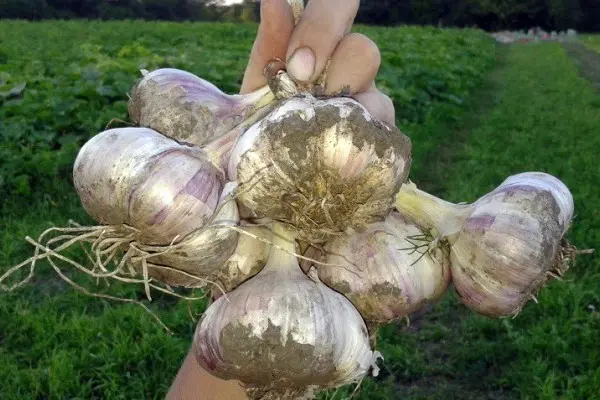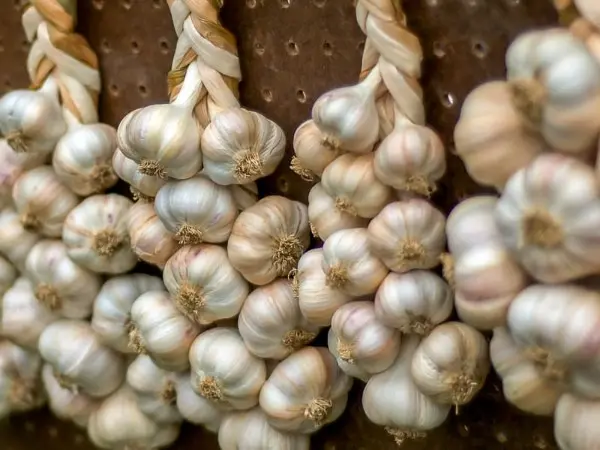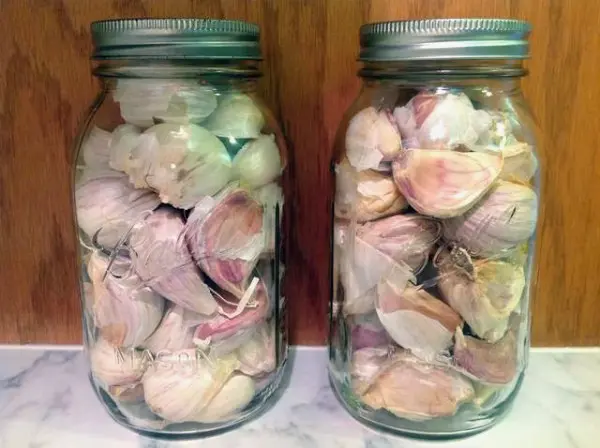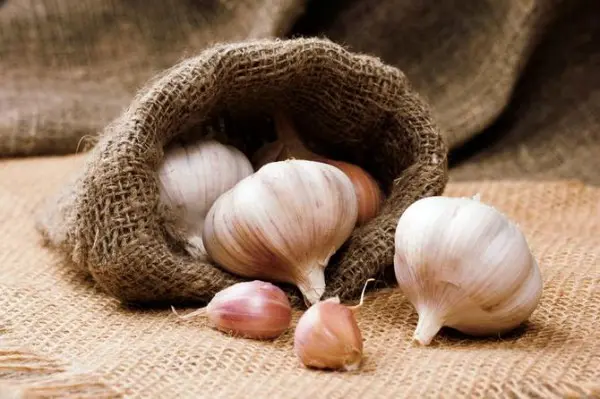Contents
Every year, at the end of summer, the same question is raised: “How to keep garlic until spring?”. Despite the abundance of options, it is not always possible to implement all possible methods at home. It also happens that the year turned out to be so fruitful that the old, proven methods of storing garlic are no longer suitable. In this article, we will talk about how best to dig this plant, what drying conditions take place, how to collect material for planting and, of course, how to store garlic.
General rules
After the garlic harvest has passed, it is important to properly withstand it for the first 7-10 days. During this period, vegetative processes in the plant are still taking place, and in order to get high-quality seed material or bulbs with good keeping quality, you need to let it rest. Best of all, drying takes place under a canopy, when the sun’s rays do not fall on the bulbs. Despite the dense husk, the plant can easily get burned, which will lead to its deterioration.
Subsequent storage after excavation should take place in a dry atmosphere with low air temperature. It should be understood that even dried raw materials can deteriorate, for example, become moldy or rotten. Subject to all the rules, the storage of garlic will pass without problems.

A little about harvesting garlic
Harvesting garlic from the beds is a responsible task, you should not blindly rely on luck in this matter. Remember that winter varieties need to be dug in mid-July (or guided by the vegetative period of the variety), and spring varieties in mid-August, until early September. So you can’t wait for the weather by the sea, allowing the bulbs to overripe. Delay, in general, ends sadly in the case of this culture – the shelf life is noticeably reduced, as is resistance to fungal microflora.
When the leaves of the plant begin to turn yellow, and the husk on the bulb becomes dense, it is best to immediately dig it out.
Harvesting should be done in warm, dry weather. Take it in the morning or evening hours when the sun is not so active. Sheltering the crop from the sun is one of the most important tasks. Take a fork and gently pry the bulbs out of the ground. Of course, you can use a shovel, but this increases the risk of cutting roots or bulbs.
When all the heads are above the ground, move them under a canopy, clear the ground and leave.
Drying under a canopy lasts from 7 to 10 days. All this time, you can not cut the roots and stems, because the plant needs to calmly complete all internal processes.
The preparation of garlic for storage ends when on day 11-12 you cut the roots, leaving only 2 cm in length, and also shorten the stem to 5-6 cm.

Methods
Garlic is stored in different ways, the choice of which depends on the number of fruits and the free space in your cellar or refrigerator. You can combine different options with each other. For example, when you run out of space in the refrigerator, hang dried heads on the balcony, and then cut off the head whenever necessary. There is no single answer to the question “how to store garlic properly,” since correctness is determined only by storage conditions.
So, how to store garlic when cleaning and drying is over?
Box
Probably one of the most ergonomic ways is wooden or cardboard boxes. In the walls you need to make ventilation holes, cover the bottom with salt, sawdust or ash. Next, you need to alternate layers of garlic heads with salt / sawdust / ash until you completely fill the box. When this happens, put it in a dry, cool place.
Bank
A great way is to clean the heads and put the cloves in a jar. The jar must first be sterilized and dried. There are two options for storing garlic in a jar: in flour and in oil.

Shake the cloves in a jar, sprinkle with flour, and then close the lid tightly. Thus, the cloves remain fresh for 2-3 months.
The storage technology in oil is similar. When you choose which oil to fill in (sunflower, corn, olive), fill it with cloves, close the lid with holes and refrigerate. In this way, garlic can be stored for up to 3 months. Oil, by the way, can then be used in cooking.
Powder
Harvesting and harvesting garlic can seem like the lesser of two evils when it comes to preparing it for storage.
Peel the cloves, cut them into slices and dry in the oven. Then grind to a powder and store in a jar with a tight-fitting lid. Garlic powder does not lose its taste and nutritional properties, and it also spoils less often.

Pouches
Collecting and drying garlic heads in bags is another option for ergonomic storage of the crop. Onion peels and heads of garlic are put into linen knapsacks, tied tightly and hung in a dark, dry, cool place. This method helps to protect the bulbs from insects, as well as mold.
Paraffin
The treatment of garlic bulbs with hot paraffin was actively used in vegetable warehouses in the last century. Melt the paraffin over a fire or a water bath, and then alternately dip all the heads of garlic into it, holding the stem. After it hardens, put it in a cool place, such as a refrigerator.
Solving possible problems
It should be noted that all problems in the storage of garlic arise solely due to violations of the conditions. In order not to spoil the seed and aromatic food additive, do not allow high humidity. Ideally, it should be zero. Garlic is best stored at an air temperature of + 2-5 degrees. This helps him develop the root system more actively next year, accelerates the growing season.
At the stage of selection of the bulbs, make sure that there are no bruises, wormholes, rot and mechanical damage on them. Select only whole and strong bulbs, as they will serve as good raw materials for growing, and will also be better preserved until spring.
Video “12 ways to save garlic”
This video will show you 12 ways to store garlic. You just have to choose the right one.









